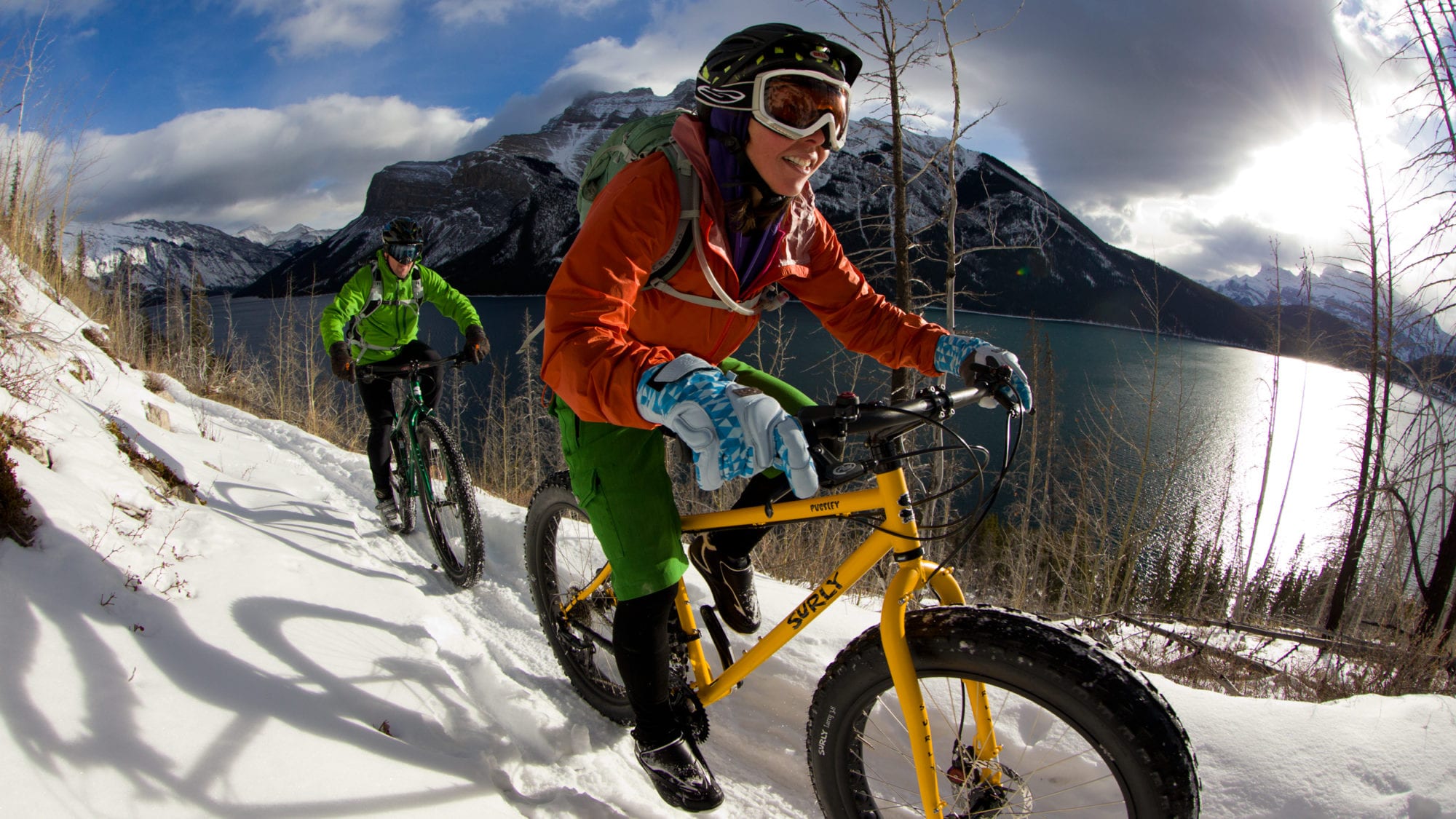If you find yourself in the Rockies this winter, you’re likely to spot more than a few intrepid Albertans plowing through the snow on bicycles. That’s right: Fat biking, so called because of the bikes’ winter-busting extra-wide tires, continues to gain popularity as another pulse-pounding way to exercise during the snowy season while admiring the province’s pristine mountain terrain.
WHAT IS IT?
The main difference between typical bike riding and fat biking is the size of the tires you ride on. They’re at least 3.8 inches wide and can go up to approximately five inches, according to Randal Riddell of Jasper’s The Bench Bike Shop, which offers half- and full-day fat-bike rentals (including a helmet and lock) in winter. For traction, the tires are also filled to a rather low pressure—usually less than 10 psi.
WHAT’S THE APPEAL?
“The combination of big tires and low pressure allows people to get enough traction to ride on snow, sand and lots of other terrain, which makes fat bikes great for exploring new places to ride,” Riddell says. Beyond that, fat biking is just fun: “It’s the kind of bike that makes you feel like a kid again.”
WHAT OTHER GEAR DO I NEED?
“I usually recommend that people dress as they would for cross-country skiing or any other aerobic exercise in cold weather,” Riddell says. That means light layers that can be removed or added depending on the temperature and how hard you’re riding. Likewise, a light beanie will ensure your head stays warm under your cycling helmet, though simply donning a ski or snowboard helmet also works.
MORE TO READ
Skiing, ice fishing and more winter fun in Kananaskis Country
As for accessories, Riddell advises “a water bottle tends to work better than a hydration pack, since the water can freeze in the tube outside of your pack,” while hand and foot warmers are always a blessing on very cold days. And a good headlight is useful if you plan on riding into the later afternoon; in midwinter it can get dark before you know it.
WHERE ARE THE BEST PLACES TO RIDE?
Snowfall in Alberta tends to be drier and more powdery, which is as ideal for fat bikers as it is for downhill skiers. It also means that wherever there’s a safe, marked trail covered with the white stuff, there’s an opportunity for an invigorating winter ride.
Both Jasper and Banff National Parks, as well as the Canmore Nordic Centre, maintain a number of groomed trails for winter riding, and the sport has lately been embraced by southern Alberta destinations like Castle Provincial Park, too. Riddell points out that riding across a frozen lake can be particularly amazing, though it’s best to do this only with an experienced guide.
Always check trail reports and/or speak to park staff before setting out, in case weather (or avalanche) conditions have made it unsafe to ride. And remember that in many cases you’ll be sharing the trail with snowshoers and cross-country skiers; yield to them if your paths cross, and make a habit of riding single-file.
